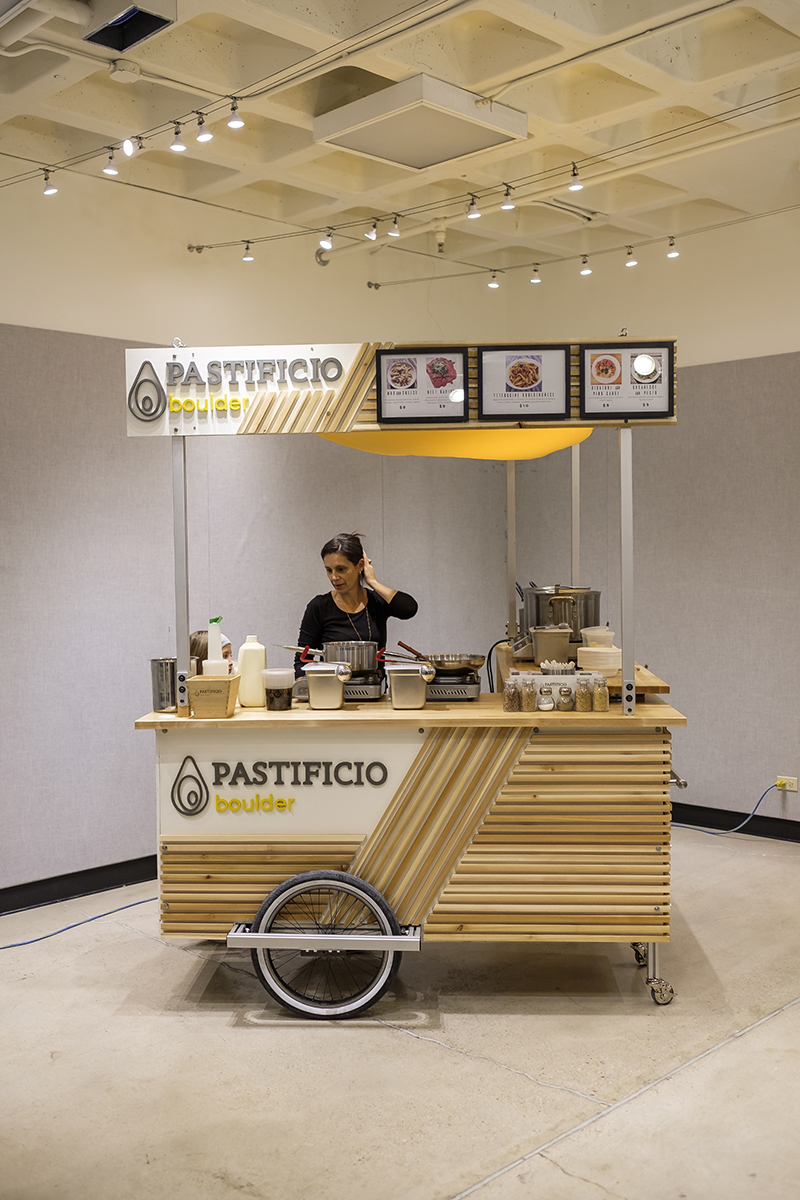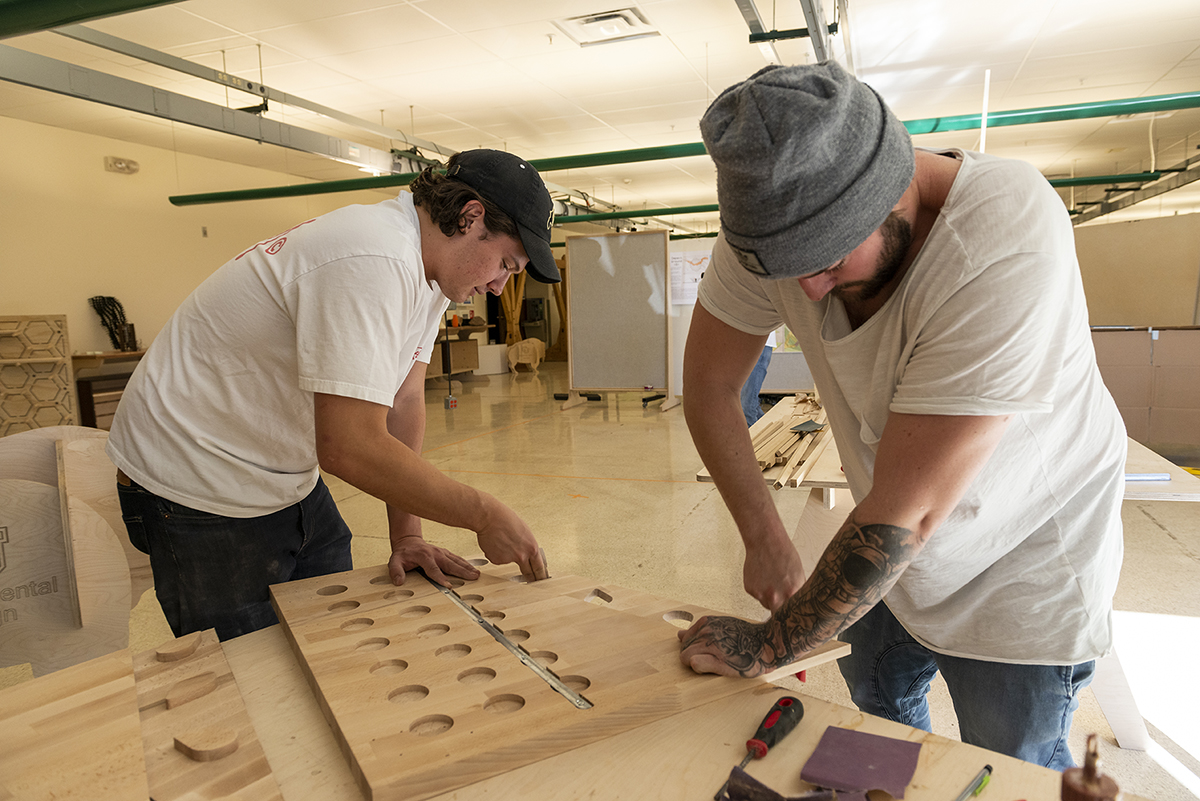Words: Kris Scott
CU-Boulder Environmental Design students involved in the project:
Joey Bradford, Kyle Burds, Lauren Hanson, Eric Kern, Brianna Lamb, Maddie Liedtke, Josh Mazar, Josie Phillips, Scott Rathbone, Ethan Reichel, Christine Scoufis, Katelyn Sector, Trevor Shelden, Jason Sisneros, Nico van der Meulen
When Boulderites Claudia Bouvier and Ted Steen started their small artisanal pasta business last year, they did not know how quickly they would grow.
When Jade Polizzi, a senior instructor for the University of Colorado-Boulder’s environmental design program came back after taking a year off, she was not anticipating a group of fourth year students so eager to do a culinarily focused design-build project with her.
In a bit of simpatico design synergy, Polizzi happened to be friends with Bouvier and Steen, and knew they were looking to grow their business to include catering and pasta-making workshops, but in a small way.
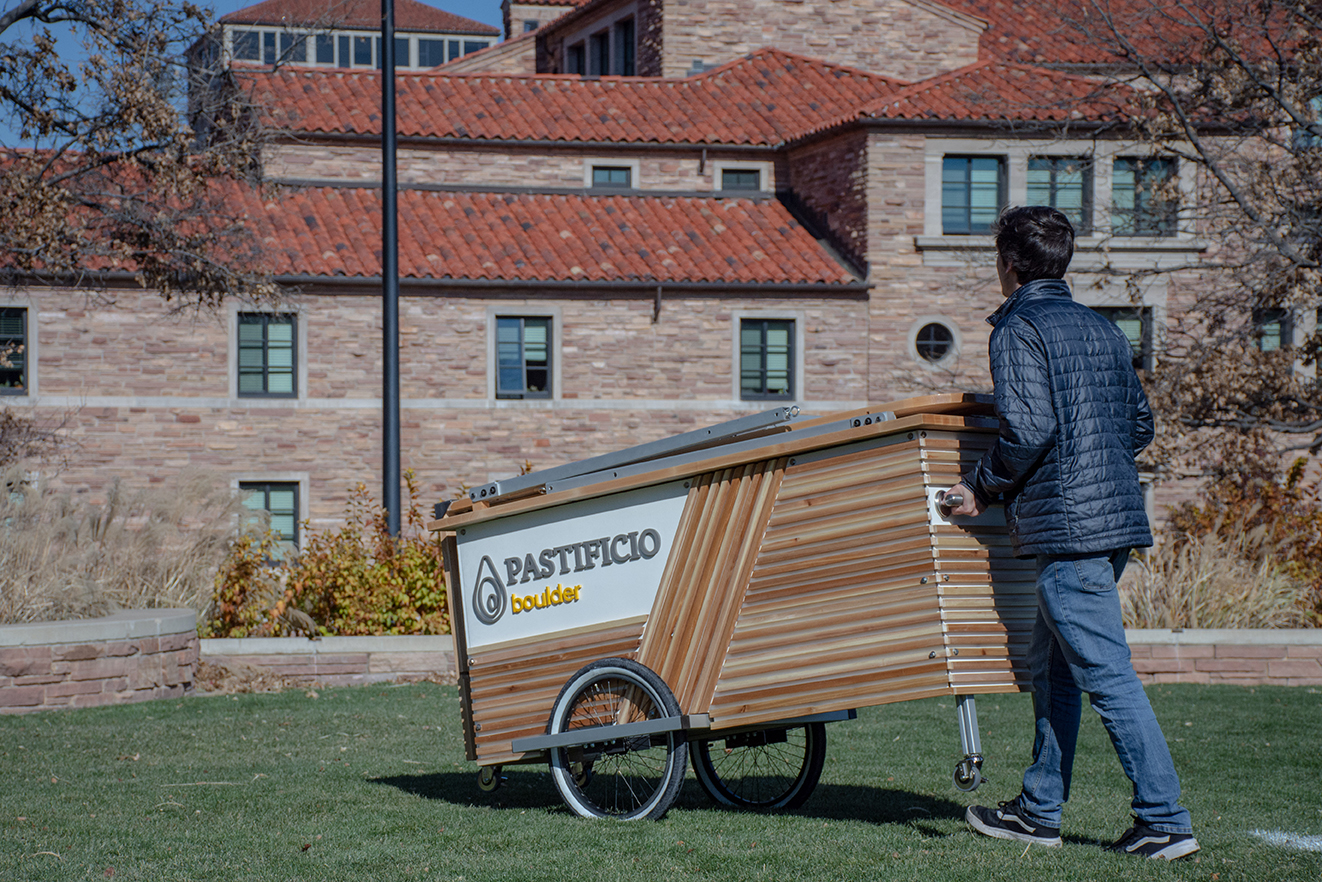
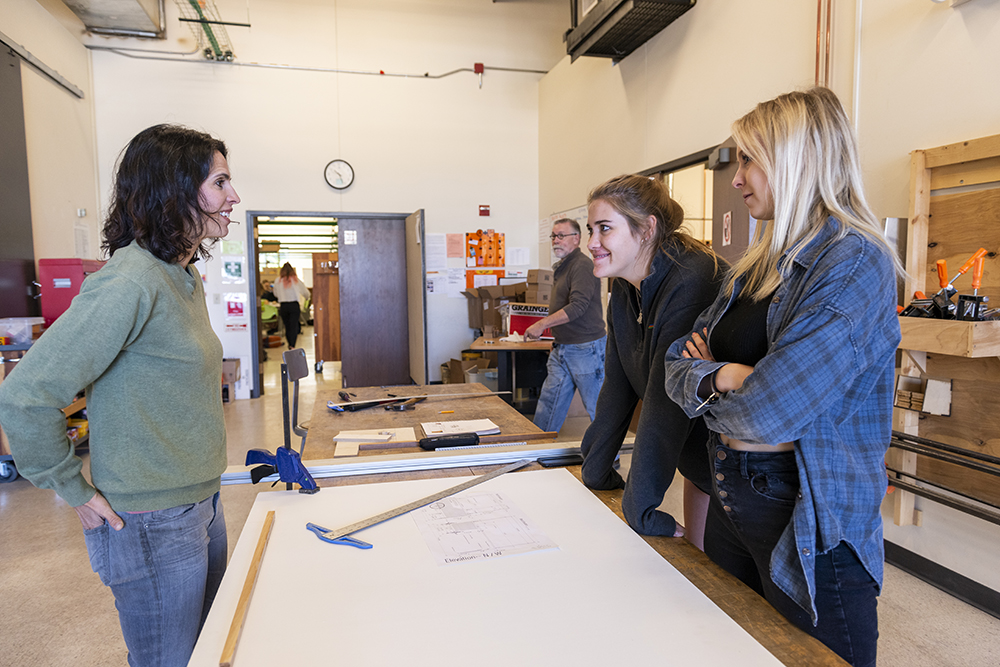
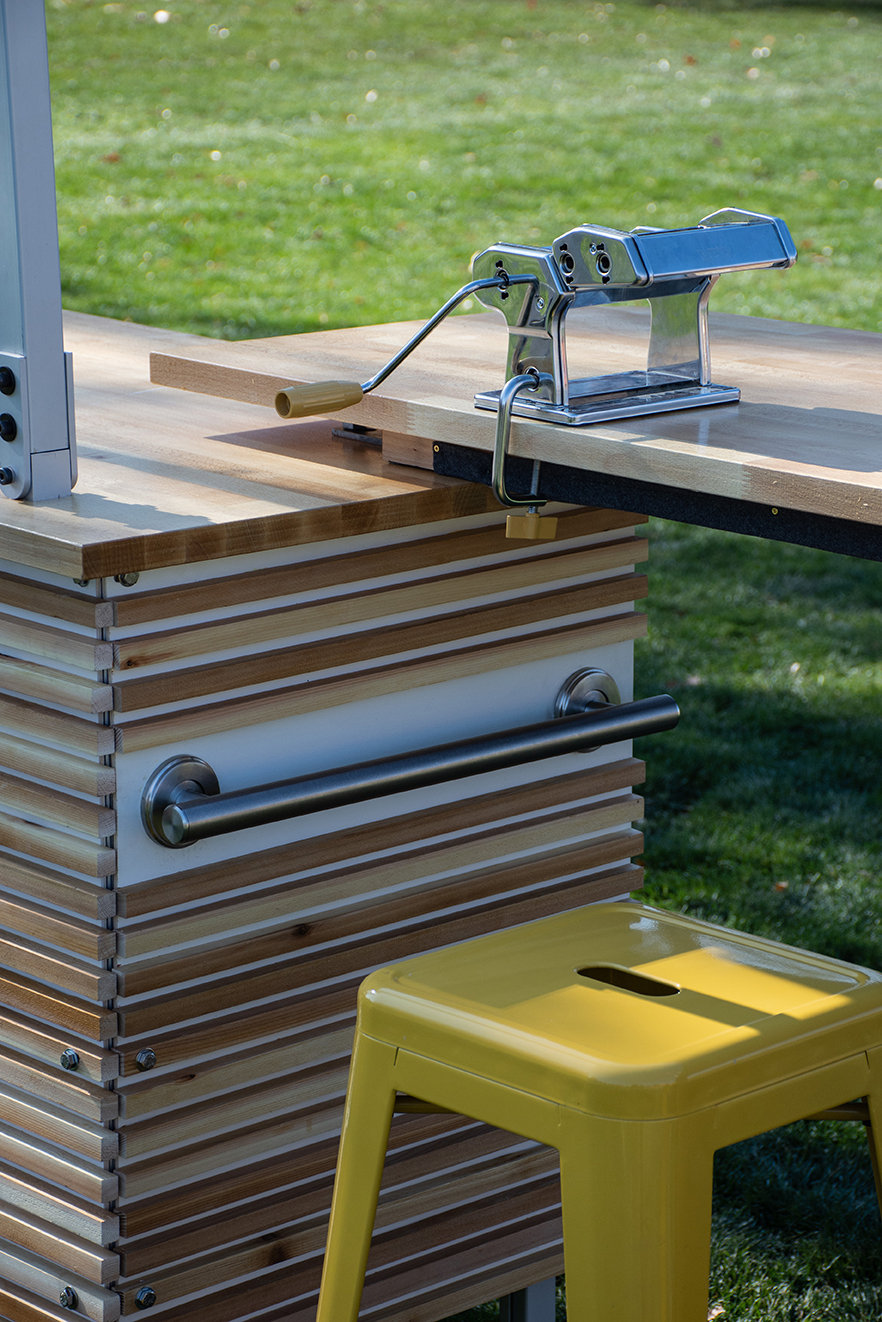
Once Polizzi established the project’s design principles and a six- to seven-week timeline with Bouvier, her students split off into teams of three to conceptualize designs. During this process, each team focused on objectives such as durability and affordability, but also the inclusion of kinetic elements — features that could be moved around and folded away or rotated so that the final design was as efficient and multi-purpose as possible. The design also needed to include storage, plenty of countertop space and operate as a marketing tool, so incorporating Pastificio’s brand aesthetics needed was an important part of the equation. Finally, they had to do all this within the constraints of an approximately $2,000 budget, so up to three-quarters of the materials had to be diverted from landfills or salvaged.
The entire process was “incredibly gratifying,” Bouvier says. “All the students were great listeners and clearly recognized Pastificio Boulder’s visual identity and operational needs. Jade had a fundamental role guiding them along the process, nurturing creativity and encouraging risk taking.”
Polizzi echoes those thoughts regarding the students. “The students were pretty amazing. They were excited and enthusiastic,” she notes. Because every side of the final result would be so visible, she adds, the students “had to be really careful with the craft the whole way through. Luckily this was a pretty meticulous group.”
The final design, submitted by students Scott Rathbone, Kyle Burds and Katelyn Sector, has a clean Scandinavian aesthetic, Polizzi says, and incorporated a color palette of wood tones — including a butcher block countertop— white and yellow. The frame was constructed in 8020 aluminum to keep it relatively lightweight — around 350 lbs, she estimates.
The three-person design team all say the experience deepened their understanding of the challenges involved in design-build projects.
“The cart has a lot of moving parts and thus a lot of complications,” says Rathbone. “Rolling, swiveling, folding — each element required additional iteration and testing. Getting each moving part to operate smoothly was crucial to the success of the design, and in my opinion, the most challenging aspect of the design-build process.”
Rathbone adds that he also learned a lot about the collaborative process — “having 16 minds on the project was really advantageous because our successful design solutions often came from bouncing ideas off one another.”
Burds echoes these thoughts: “Drawing a design on paper or modeling it in a 3D software doesn’t capture the difficulties and intricacies of construction,” he says. “There were a few students with the most construction background who ended up taking the forefront of the construction process and working with them, and Jade was by far the most valuable learning experience.”
It’s also as functional as she and Steen hoped it would be, and will help continue to grow their brand. “By having a lightweight, easy to transport and self-contained unit that clearly reflects the aesthetics of our branding, we are now able to efficiently expand the number of events we cater.
Finally, she gives kudos to the students, who were really committed to the final result, she says. “We know how much of the students’ hearts was dedicated to the project, and our pasta cart is outstanding proof of how they could transform their knowledge into creative, innovative solutions with clean and contemporary design aesthetics. It was an extremely fun experience for us.”
Polizzi adds that it was an incredible learning opportunity, both in design-build and collaboration, that helped her students with further accomplishments through the remainder of the class. “In the end not only was the project a success, but it also galvanized the studio group who completed excellent work at the end of the semester, having worked intensely together to construct the cart.”
